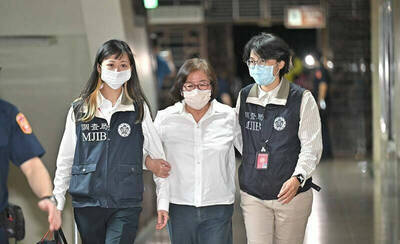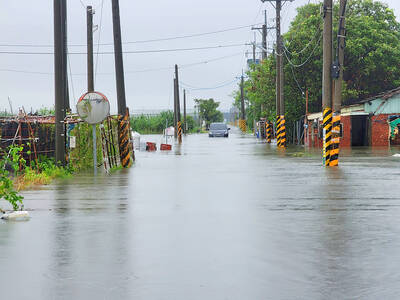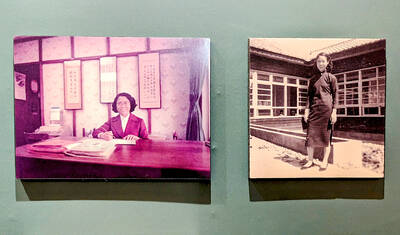Francesca Salcido went on 300 dates in 24 hours without breaking a sweat. Her encounters with aspiring beaus happened online at SpeedDate.com, a US start-up built on a belief that it need not take more than 90 seconds to find a life partner.
“We may be using Web cams and Internet technologies, but you’re still trying to find that chemistry,” SpeedDate co-founder Dan Abelon said. “And if it isn’t there, you just move on to the next person.”
The Web site and its competitors apply the latest Internet technology to speed dating, a phenomenon that started a decade ago with men and women darting from table to table to chat in rapid-fire succession at a time keeper’s signal.
“If people decide they don’t like someone, they usually know within 30 seconds,” said Stephen Stokols, chief executive of SpeedDate rival WooMe.com.
“If you meet someone you like, three minutes isn’t long enough. If you don’t like them, 30 seconds is too long.”
Automated timers at SpeedDate and WooMe cut off online video chats after as little as 90 seconds or as long as three minutes. Those that felt romance kindling during curt exchanges can later reconnect to fan the flames.
The speed-dating formula differs dramatically from the format of most dating Web sites, which require users to detail their lives and interests in intricate profiles or extensive questionnaires.
Love seekers on those sites are matched based on their profiles and then chat via e-mail before deciding whether to meet in person.
“We’re more like dating in real life,” Abelon said. “If you see someone you like in real life, you don’t go up to them with your resume and compare. You just talk.”
Instead of sitting at a coffee shop or a bar, speed dating Web sites let potential mates meet using Web cams and microphones.
“I wanted to be a little ridiculous and put myself out there,” Salcido said.
“My mom said the more places you put your resume, the better chance you have for finding a job. I figured I’d do the same thing with dating.”
When SpeedDate went live a year ago, it hosted 1,000 dates its first night.
Now it is a setting for from 100,000 to 120,000 virtual dates daily, with most of those online encounters orchestrated by Web applications in profile pages of social networking Web sites MySpace and Facebook.
SpeedDate boasts users in nearly 200 countries.
WooMe.com reports that 1,000 to 4,000 registered users are logged into the site at any given time.
Stokols says that while users of SpeedDate.com are trying to find romance, most WooMe.com users have learned that true love may be fleeting but real friends are forever.
“Eight to 10 percent of our users have been to real dating sites,” Stokols said. “We’re more about meeting new friends, not necessarily meeting new dates.”
In this spirit, WooMe sent two of its users on a US road trip to meet in the flesh 1,000 of the new friends they made on the Web site.
The duo’s bar-filled adventures are being memorialized in text and video on the aptly named WooAroundAmerica.com.
“The dating stories are good to hear, and we’ve got plenty of them,” Stokols explained.
“What interests me are the stories that are unique to our platform where we’ve come up with a new way for people to extend their social network.”

Following the shock complete failure of all the recall votes against Chinese Nationalist Party (KMT) lawmakers on July 26, pan-blue supporters and the Chinese Communist Party (CCP) were giddy with victory. A notable exception was KMT Chairman Eric Chu (朱立倫), who knew better. At a press conference on July 29, he bowed deeply in gratitude to the voters and said the recalls were “not about which party won or lost, but were a great victory for the Taiwanese voters.” The entire recall process was a disaster for both the KMT and the Democratic Progressive Party (DPP). The only bright spot for

Water management is one of the most powerful forces shaping modern Taiwan’s landscapes and politics. Many of Taiwan’s township and county boundaries are defined by watersheds. The current course of the mighty Jhuoshuei River (濁水溪) was largely established by Japanese embankment building during the 1918-1923 period. Taoyuan is dotted with ponds constructed by settlers from China during the Qing period. Countless local civic actions have been driven by opposition to water projects. Last week something like 2,600mm of rain fell on southern Taiwan in seven days, peaking at over 2,800mm in Duona (多納) in Kaohsiung’s Maolin District (茂林), according to

Aug. 11 to Aug. 17 Those who never heard of architect Hsiu Tse-lan (修澤蘭) must have seen her work — on the reverse of the NT$100 bill is the Yangmingshan Zhongshan Hall (陽明山中山樓). Then-president Chiang Kai-shek (蔣介石) reportedly hand-picked her for the job and gave her just 13 months to complete it in time for the centennial of Republic of China founder Sun Yat-sen’s birth on Nov. 12, 1966. Another landmark project is Garden City (花園新城) in New Taipei City’s Sindian District (新店) — Taiwan’s first mountainside planned community, which Hsiu initiated in 1968. She was involved in every stage, from selecting

As last month dawned, the Democratic Progressive Party (DPP) was in a good position. The recall campaigns had strong momentum, polling showed many Chinese Nationalist Party (KMT) lawmakers at risk of recall and even the KMT was bracing for losing seats while facing a tsunami of voter fraud investigations. Polling pointed to some of the recalls being a lock for victory. Though in most districts the majority was against recalling their lawmaker, among voters “definitely” planning to vote, there were double-digit margins in favor of recall in at least five districts, with three districts near or above 20 percent in